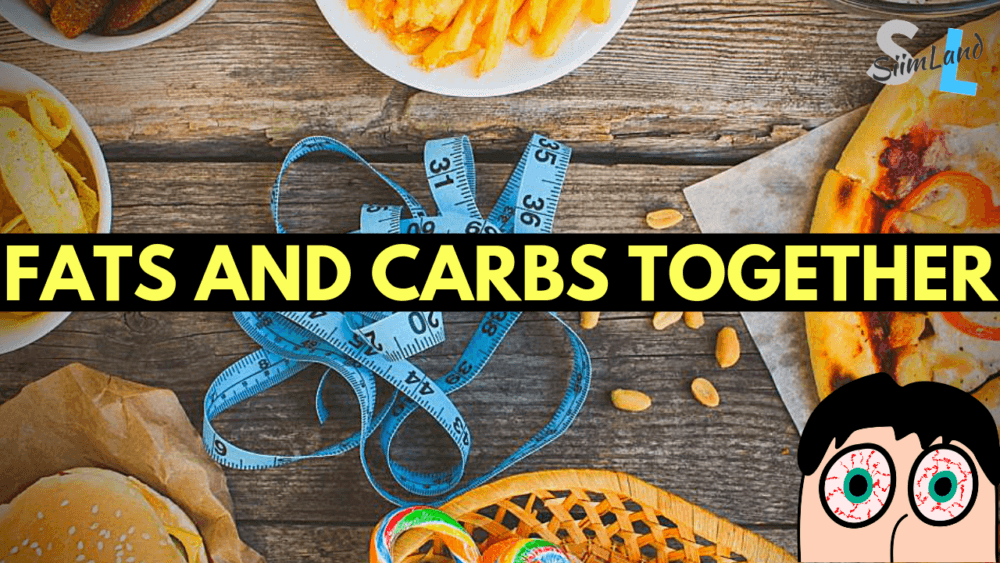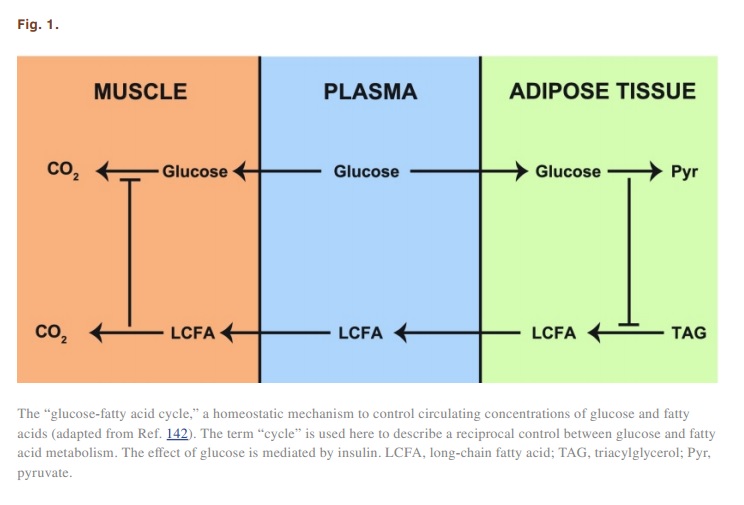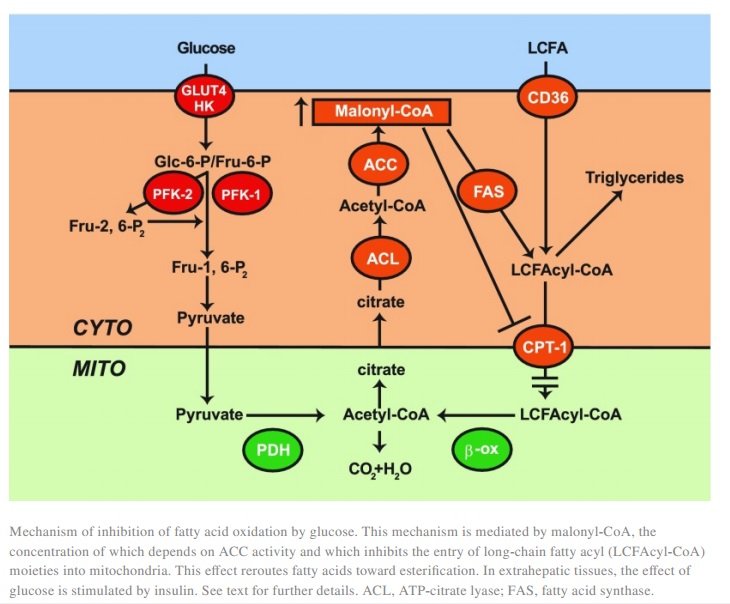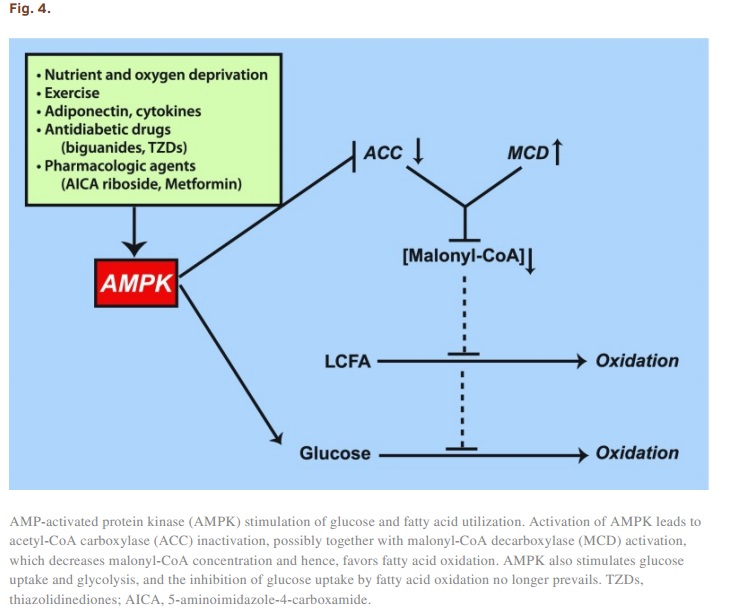i am have some some issues with gas, not so serious but still. I am now trying single-ingredient diet. I see some people are doing it on internet but they are vegans. I was thinking about eating one type of fruit for a meal, then let's say potatoes, and then some cheese or eggs alone, or meat alone. I guess, I would add fat to potatoes or perhaps some honey to white cheese. But you get my point. There are many theories about food combining, but most of them are questionable. Eating one food at the time makes more sense from digestion perspective so all the different foods do not get mixed in the stomach and begin to ferment.
Navigation
Install the app
How to install the app on iOS
Follow along with the video below to see how to install our site as a web app on your home screen.
Note: This feature may not be available in some browsers.
More options
-
By using this site you agree to the terms, rules, and privacy policy.
-
Charlie's Restoration Giveaway #2 (Entire Home EMF Mitigation & Protection Along With Personal Protection) - Click Here To Enter
-
Dear Carnivore Dieters, A Muscle Meat Only Diet is Extremely Healing Because it is a Low "vitamin A" Diet. This is Why it Works so Well...
Rest the rest of this post by clicking here
-
The Forum is transitioning to a subscription-based membership model - Click Here To Read
Click Here if you want to upgrade your account
If you were able to post but cannot do so now, send an email to admin at raypeatforum dot com and include your username and we will fix that right up for you.
You are using an out of date browser. It may not display this or other websites correctly.
You should upgrade or use an alternative browser.
You should upgrade or use an alternative browser.
Mono-Meals - Anyone Tried That?
- Thread starter Kris
- Start date
That might wreck your blood glucose. I used to be on and off low carb, and flirted with carnivore but not seriously. However, I’m naturally a meat eater since childhood, so in my low carb days, I could eat only meat as a meal. That would wreck my blood sugar a lot, symptoms wise.i am have some some issues with gas, not so serious but still. I am now trying single-ingredient diet. I see some people are doing it on internet but they are vegans. I was thinking about eating one type of fruit for a meal, then let's say potatoes, and then some cheese or eggs alone, or meat alone. I guess, I would add fat to potatoes or perhaps some honey to white cheese. But you get my point. There are many theories about food combining, but most of them are questionable. Eating one food at the time makes more sense from digestion perspective so all the different foods do not get mixed in the stomach and begin to ferment.
Other times though, when I was cheating I could eat French fries as a meal, and that would make me feel sick. In fact, carbs by themselves still make me feel sick. I have a eat a “balanced” meal to feel fine afterwards.
That might wreck your blood glucose. I used to be on and off low carb, and flirted with carnivore but not seriously. However, I’m naturally a meat eater since childhood, so in my low carb days, I could eat only meat as a meal. That would wreck my blood sugar a lot, symptoms wise.
Other times though, when I was cheating I could eat French fries as a meal, and that would make me feel sick. In fact, carbs by themselves still make me feel sick. I have a eat a “balanced” meal to feel fine afterwards.
what are the symptoms of having wrecked blood glucose? I am not saying to eat only meat. But for instance, you eat fruits. And after they are digested, you can have some meat or eggs or cheese. some foods takes longer to digest, but you can recognise it by getting hungry again. Each one is different. I am curious to try. If you eat fruits, the body stores glucose anyway, so one does not have to mix protein with sugar in a single meal.
Oh I see, I misunderstood you!what are the symptoms of having wrecked blood glucose? I am not saying to eat only meat. But for instance, you eat fruits. And after they are digested, you can have some meat or eggs or cheese. some foods takes longer to digest, but you can recognise it by getting hungry again. Each one is different. I am curious to try. If you eat fruits, the body stores glucose anyway, so one does not have to mix protein with sugar in a single meal.
We usually do what you describe in normal life. Like some people start a meal with salad followed by the main meat. Some people eat meat followed by potatoes and then end the meal with fruits. If I only ate fruit without protein, I would be hungry again in 15-20 minutes.
Anyway, the hypoglycaemic symptoms I sometimes got after only eating meat were dizziness, sleepiness, shutting down, some chest pain, and nausea.
The symptoms I would get after eating chips, for example, would be nausea, emptiness, dizziness, faint feelings.
Oh I see, I misunderstood you!
We usually do what you describe in normal life. Like some people start a meal with salad followed by the main meat. Some people eat meat followed by potatoes and then end the meal with fruits. If I only ate fruit without protein, I would be hungry again in 15-20 minutes.
Anyway, the hypoglycaemic symptoms I sometimes got after only eating meat were dizziness, sleepiness, shutting down, some chest pain, and nausea.
The symptoms I would get after eating chips, for example, would be nausea, emptiness, dizziness, faint feelings.
Yes, but the difference is that people eat meat followed by potatoes before the meat is actually digested. or they eat the main course before the salad is digested. What I am referring to is waiting with the next meal until the previous one was digested. If you get hungry after eating fruit so soon, so the fruit was probably already digested, so you can eat something else. I personally don't get hungry so quickly after eating fruits. I do occasionally fruits only day, to help me lose weight or as a detox, and i feel satiated.
AlaskaJono
Member
- Joined
- Apr 19, 2020
- Messages
- 941
In the past I have made an easy potato meal with butter in a cast iron fry pan, but really I am just cooking the potatoes almost to finish, and then put some cheese chunks on it with a lid and 2 Tbls water to help steam it. That's a quick simple meal. Potatoes butter cheese. Also can do simple tacos: corn tortilla (or spelt) and pieces o' meat (or fish) from last night. Or beans. Done.
Is Food Combining Healthy? (Myths vs. How Your Body Works)

Is Food Combining Healthy? (Myths vs. How Your Body Works)
Is food combining healthy? Buying and preparing nutrient-dense foods is a lifestyle challenge in itself. Pair that with the practice of food combining and you've got a complicated mealtime dance. Over the years, I've been emailed and messaged with this question: Is food combining really worth...
Is food combining healthy?
Buying and preparing nutrient-dense foods is a lifestyle challenge in itself. Pair that with the practice of food combining and you’ve got a complicated mealtime dance. Over the years, I’ve been emailed and messaged with this question: Is food combining really worth the effort?The movement of food combining purports that certain food groups cause digestive distress and weight gain when eaten at the same meal. It traces its popularity to the 1980’s with the publication of Fit for Life. Since then, it has enjoyed the lime light on The Dr. Oz Show and Oprah.
Food Combining Rules
Although there are many variations and minute details, the basic principles of food combining include:- Don’t combine meat and starches in the same meal
- Combine vegetables with meat or starches
- Eat fruit (except lemons and limes) away from other food groups
- Avoid dairy or eat it alone
Here are the problems with the food combining philosophy, followed by the food combining rules that support wellness at a deeper level.
Food combining is not a traditional practice
Some say that the current food combining theory races its roots back to Ayurvedic texts. This literature discusses the energy of the food, since foods have either a “heating energy” and other foods have a “cooling energy”. This system also says that strong and vibrant digestion, called the digestive fire or “agni,” can help ameliorate the supposedly harmful effects of poor food combining.But while modern food combining has much in common with Ayurvedic instructions, the vast majority of traditional cultures thoroughly contradict food combining principles. According to Nourishing Traditions,
A final argument against food combining notes that we find no such strictures among traditional societies whose intuitive wisdom has dictated the food choices that kept them healthy for generations.
A few examples culled from the research of Dr. Weston Price will suffice: isolated Swiss villagers ate milk products with rye bead; primitive Gaelic peoples subsisted on fish and oats; natives of the Caribbean consumed seafood along with starchy tubers of the manoic family; Indians in the Andes mountains ate potatoes with small animals and seafood; Polynesians consumed starchy tubers, fruit and seafood. Semitic peoples combined meat and milk with grains.
Primitive peoples, with their unerring native wisdom, put no restrictions on combining starches and proteins or even fruits and proteins.
The body is designed to digest all food combinations
The evolutionary masterpiece of human digestion illustrates the bodys’ capacity to absorb all macronutrients (fats, carbs, and protein) in a single meal.- Digestion starts in the brain, when the sight, smell, thought, and taste of food triggers saliva and stomach acid production. Saliva contains an enzyme – amylase – which begins to break down carbohydrates.
- The stomach should be a literal acid tank with a pH of about 2, by the time food reaches it. This highly acidic environment turns steak into soup in minutes.
- The contents of the stomach empties into the small intestine, where the acidity triggers the pancreas to release neutralizing bicarbonate and digestive enzymes. Bile from the gallbladder is also released, which allows the absorption of the fats.
Successful digestion renders the food combining rules arbitrary and unsubstantiated.
Why does food combining help?
So why does food combining frequently work? People try a food combining diet and give exultant testimonials of vastly improved digestion and weight loss.First, food combining creates a mindful, ritualized approach to mealtime. A food combining diet can be a huge step in the right direction for many people. It forces them to give significant attention to the things they are putting in their body.
Fresh produce and whole proteins sources are emphasized, while excluding many harmful processed foods. For example, processed cereal with pasteurized milk (a highly unhealthful but ubiquitous meal) is already out of the game. The emphasis on enzyme-rich raw foods and the reduction of processed non-foods means a healthy change from the Standard American Diet.
Second, food combining may reduce food intake or problematic foods. Food combining leads to mindful portion size and freshly-prepared meals, which supports weight loss.
Additionally, food combining can act as a band-aid for numerous digestive issues by reducing intake of problem foods. For example, eating starches can cause symptoms of bloating, gas, and belching when there is inadequate stomach acid and enzyme production. Food combining often reduces the amount and frequency of starch someone consumes. This ameliorates the symptom, but does not solve the underlying cause.
The root causes of digestive problems
As I mentioned, many people attempt the complex choreography of food combining to lose weight or ameliorate chronic digestive issues. There are a few common reasons why we have digestive issues in the first place, and these issues underly obesity and hormone imbalance.1. We are not in parasympathetic mode when we eat. Parasympathetic mode is the state of the nervous system which turns on all digestive processes, from stomach acid production to the muscle contractions of the intestines.
How do you show up to your food? If you eat on the go, or while reading work emails, or while angry with your dinner companion, you are not in parasympathetic mode. As a result, you cheat your body of nutrients and, over time, may lead to a stress-induced condition of leaky gut.
2. Due to chronic stress, age, or acid-reducing medication, we may have inadequate stomach acid. Jonathan Wright wrote Why Stomach Acid is Good for You because 90% of his patients were deficient in stomach acid.
Low stomach acid leaves protein, carbohydrates and fats improperly digested. Symptoms including heartburn and leaky gut result. Please see my post How to Heal Low Stomach Acid Naturally and The Heartburn Myth for more information.
3. We have depleted digestive enzyme production. Chronic stress and a sugar-laden lifestyle take a toll on the pancreas, which produces the enzymes necessary to digest food. Additionally, low stomach acid creates a lack of digestive enzymes. The acid in the stomach is responsible for triggering the release of pancreatic enzymes.
To bolster the enzyme production in your pancreas, start by balancing your blood sugar and supporting your adrenals. In addition, support your stomach acid production as discussed above.
4. We have problems digesting fat due to years on a low-fat or poor-fat diet. This means the gallbladder can’t release bile so we can’t digest fat. Greasy stools, constipation, gallstones, and nausea after eating may indicate fat malabsorption. Please see my post 8 Ways to Improve Fat Malabsorption Naturally.
A poor understanding of physiology underlies the popular method of food combining. Here are food combining rules that support nutrient absorption and digestive wellbeing at the foundational level.
- Combine your food with the practice of mindful mealtime. Sit at the table and set aside your electronics. Create a ritual, such as setting the table or blessing your food, to transition your body into the parasympathetic mode.
- Do not gulp liquids before, during, or right after meals. Gulping a giant glass of water with a meal, a recommendation to reduce hunger, literally dampens the digestive fire. It dilutes the acidity of stomach acid, which in turn compromises enzymatic action. Avoid gulping liquids within 30 minutes of a meal, although you can enjoy a cup or liquid gradually sipped over the course of a meal.
- Enjoy protein with healthy fats. The body cannot use protein unless it is accompanied by fat. Chronic consumption of low-fat protein can deplete the body of the vitamins A and D. A grilled chicken breast with naked steamed veggies is poor food combining, indeed. Add a dollop of hormone-balancing ghee to absorb your nutrients!
- Serve leafy greens with a source of healthy fat. This could be a dressing made with olive oil, a fillet of salmon on the side, or a poached egg on your salad. The fatty acids and fat-soluble vitamins improve your absorption of nutrients in the greens.
- Enjoy carbohydrates with healthy fats. All carbohydrates break down quickly into glucose, the form of sugar that enters the blood stream. Fat slows down the absorption of glucose, supporting balanced blood sugar and stable energy levels. Additionally, when you incorporate healthy fats in your meals, you give your body long-burning fuel to keep you full. A low fat diet is not a successful weight loss diet.
Randle Cycle Explained: Why You Shouldn’t Combine Fats and Carbs Together

Randle Cycle Explained: Why You Shouldn't Combine Fats and Carbs Together - Siim Land Blog
What is the glucose fatty acid cycle aka the Randle cycle and how does it link with insulin resistance and obesity? Check out this article.
 siimland.com
siimland.com
What is the glucose fatty acid cycle aka the Randle cycle and how does it link with insulin resistance and obesity? Check out this article.
Randle Cycle Simplified
In 1963, Randel et al published a paper in Lancet where he proposed a „glucose fatty acid cycle“ that describes the flux and selection of fuel by different tissues [i].The Randle Cycle also called glucose fatty acid cycle is a metabolic process where glucose and fatty acids compete for oxidation[ii]. There is always a certain competition between different fuel substrates in the body, namely fatty acids and glucose. The Randle cycle controls the selection of these fuels in different tissues.
Muscles and adipose tissue interact with each other via hormones that regulate fuel partitioning and utilization. Hormones that control fat oxidation affect circulation of fatty acids, and fatty acids, in turn, control fuel selection in muscles[iii].
In the context of nutrition, the Randle cycle explains what kind of fuel get burnt off in what order of priority. You’re always burning a mixture of everything (glucose, ketones, fatty acids, protein, lactate etc.) but the body prefers to burn the most readily available one.

Randle Cycle Hypothesis
It is thought that the Randle cycle can explain the reason for type 2 diabetes and insulin resistance[iv][v]. The hypothesis is that combining fats and carbs together promotes obesity and metabolic disorders because of confusing the body’s priorities for burning these fuel sources.Insulin and glucose uptake inhibit the oxidation of adipose tissue fatty acids in the presence of glucose-derived glycerol 3-phosphate[vi]. When you eat carbs or spike insulin, you slow down burning fat because of raising the insulin to glucagon ratio towards higher insulin.
Eating fats alongside high insulin and carbs shuttles the fat into body fat stores much more easily and quicker because of the higher insulin to glucagon ratio. Lipolysis will resume once the insulin-glucagon ratio drops to a higher glucagon state.
The most important rule of nutrition is to not eat high amounts of fats together with carbs that spike your insulin. This is what the standard Western diet is composed of. Not only does it make fat storage much easier on the physiological level but also over-rides hedonic control mechanisms in the brain thus making you want to over-eat because it feels rewarding.
Randle Cycle Biochemistry
Randle showed that the impaired glucose metabolism by fatty acids was moderated by a short-term inhibition of several glycolytic steps[vii]. They are glucose transport and phosphorylation, 6-phosphofructo-1-kinase (PFK-1), and PDH
- Fatty acid oxidation increases the ratios of acetyl-CoA and NAD+ in the mitochondria, which inhibit PDH activity
- Changes in the mitochondrias’ fuel partitioning inhibit pyruvate dehydrogenase activity[viii]
- This accumulates cytosolic citrate, which inhibits PFK-1[ix]
- Glucose oxidation gets rerouted towards glycogen resynthesis
- Oxidized glucose called pyruvate gets directed to anaplerosis and/or gluconeogenesis

Certain fatty acids can bind to transcription factors called PPARs that regulate lipid metabolism and balance[x].
Overexpression of PPARs in muscles and heart promotes fatty acid oxidation but can cause accumulation of triglycerides, glucose intolerance, and insulin resistance[xi]. Does this mean you get insulin resistant when burning fat?
Randle Cycle and Insulin Resistance
Fatty acids can stimulate insulin secretion by acting on the pancreatic β-cells. This effect is biphasic and short-term. It’s been shown that after prolonged exposure, fatty acids will eventually inhibit glucose-induced insulin secretion[xii].Upregulating pyruvate-dependent kinase (PDK) in response to a high fat diet or starvation leads to metabolic inflexibility and shows a maladaptive heart[xiii]. This effect occurs in dysfunctional lipid metabolism and/or maladaptation to burning fatty acids.
Fatty acid syndrome describes severe abonormalities in carbohydrate metabolism common in many nutritional disorders like diabetes, Cushing’s syndrome, and starvation. These conditions are often accompanied by high concentrations of fatty acids and glucose. This is basically insulin resistance, which is characterized by decreased glucose uptake and altered lipid metabolism[xiv].
Muscle insulin resistance results in a lower oxidation of fatty acids by the mitochondria[xv]. However, this occurs in different muscle types[xvi].
Insulin resistance caused by fasting or the ketogenic diet is a temporary adaptation to preserving glucose for certain vital organs like the brain by blocking the uptake of glucose by muscles that would steal the glucose from the brain.
Does Fat Cause Insulin Resistance?
PPARs also control many inflammatory processes that contribute to atherosclorosis and type 2 diabetes[xvii].Fatty acids and ketones have a glucose-sparing effect in the absence of glucose, which is an essential survival mechanism for the brain during starvation[xviii]. This will also preserve pyruvate and lactate both of which are precursors to gluconeogenesis[xix]. Thus the demand for glucose production also decreases in a state of ketosis or while fasting.
Physiological insulin resistance can also be seen during exercise where the use of fatty acids increases. The glucose that is not oxidized gets rerouted to glycogen, which may explain the rapid resynthesis of muscle glycogen post-exercise[xx].
After eating a high-fat meal, plasma concentrations of fatty acids increase, rerouting the unoxidized glucose to glycogen resynthesis. This also explains why during starvation or diabetes people’s glycogen stores are still full – their body spares glucose and stores it as glycogen while burning primarily fatty acids and ketones.
Inhibiting glucose utilization by fatty acids resembles physiological insulin resistance but it’s a temporary adaptation to an influx of fatty acids and lack of glucose. This often happens in a fasted state or when eating the ketogenic diet.
Randle Cycle and Type 2 Diabetes
Long-term insulin resistance or type-2 diabetes outside conditions of fasting or ketosis are caused by diet and lifestyle.Type 2 diabetes is completely cureable and preventable with the right eating. You just have to stop consuming the things that cause problems with glucose metabolism.
Processed food that combines fats and carbs together is the perfect recipe for insulin resistance and diabetes. It’s going to raise blood sugar, spike insulin, increase triglycerides, which make muscles insulin resistant, and examplify the power of the Randle cycle.
Hyperpalatable foods high in calories are very easy to over-eat and they have powerful effects on the brain’s reward system. This leads to over-consumption of calories and obesity, which are the silent causes of insulin resistance as well.
Randle Cycle and Fasting
There are some situations where rules of the glucose-fatty acid cycle do not apply or are severely altered.Stress overrides the inhibition of glucose by fatty acids[xxi]. During physiological stress or exercise, the demand for fuel increases but the supply decreases. This activates AMPK, which is a fuel sensor that mobilizes the body’s fuel sources. Activation of AMPK causes a metabolic adaptation that protects the heart from ischemic stress[xxii].
With activated AMPK you can use both glycolytic pathways as well as ketogenic pathways for energy production because there’s increased demand for ATP. That’s why exercise and fasting have similar physiological mechanisms in the short term.

Randle Cycle Explained
In conclusion, you should remember that it’s not a good idea to combine fats and carbs together because they make fat storage much easier and promote over-eating.There is nothing inherently wrong with eating processed food that’s high carb, high fat, low protein as long as it doesn’t make you gain weight or give you diabetes. It’s just much more difficult to stick to and you have less room for error.
If you’re going to eat high carb foods like bread, potatoes, rice, fruit etc., then it’s best to keep the other ingredients lower in fat. You’d want to still keep the fiber and protein higher for increased satiety.
If you’re going to eat high fat foods like bacon, eggs, steak, nuts, chocolate, butter etc., then you want to make it low carb. Protein doesn’t really have an effect on this within a reasonable amount as it’s used for building blocks.
This is all very interesting. But I see some contradictions between these two last articles. One says that combining food is not a traditional practice and body is designed to digest all kind foods combined, and the second concludes that it is not good to combine carbs with fats; or am I missing something? And the fact that people from older traditions were combining food certain way, does not mean that it was based on some kind of intuitive wisdom; they just ate what was available.
The thing about mono-meals that you just don't combine any foods, and you do, so with bare minimum. I would still add a bit butter to potatoes because alone they don't taste so good. Anyway, i am on the second day with my experiment and so far I have no gas which is a good sign, and I am satiated.
The thing about mono-meals that you just don't combine any foods, and you do, so with bare minimum. I would still add a bit butter to potatoes because alone they don't taste so good. Anyway, i am on the second day with my experiment and so far I have no gas which is a good sign, and I am satiated.
Last edited:
Actually I get hungry and get hypoglycaemic symptoms like weakness and dizziness very soon after eating if I eat only one thing like meat or fruit or vegetable separately. So I guess mono meal doesn’t work for me.Yes, but the difference is that people eat meat followed by potatoes before the meat is actually digested. or they eat the main course before the salad is digested. What I am referring to is waiting with the next meal until the previous one was digested. If you get hungry after eating fruit so soon, so the fruit was probably already digested, so you can eat something else. I personally don't get hungry so quickly after eating fruits. I do occasionally fruits only day, to help me lose weight or as a detox, and i feel satiated.
EMF Mitigation - Flush Niacin - Big 5 Minerals
Similar threads
- Replies
- 52
- Views
- 14K
